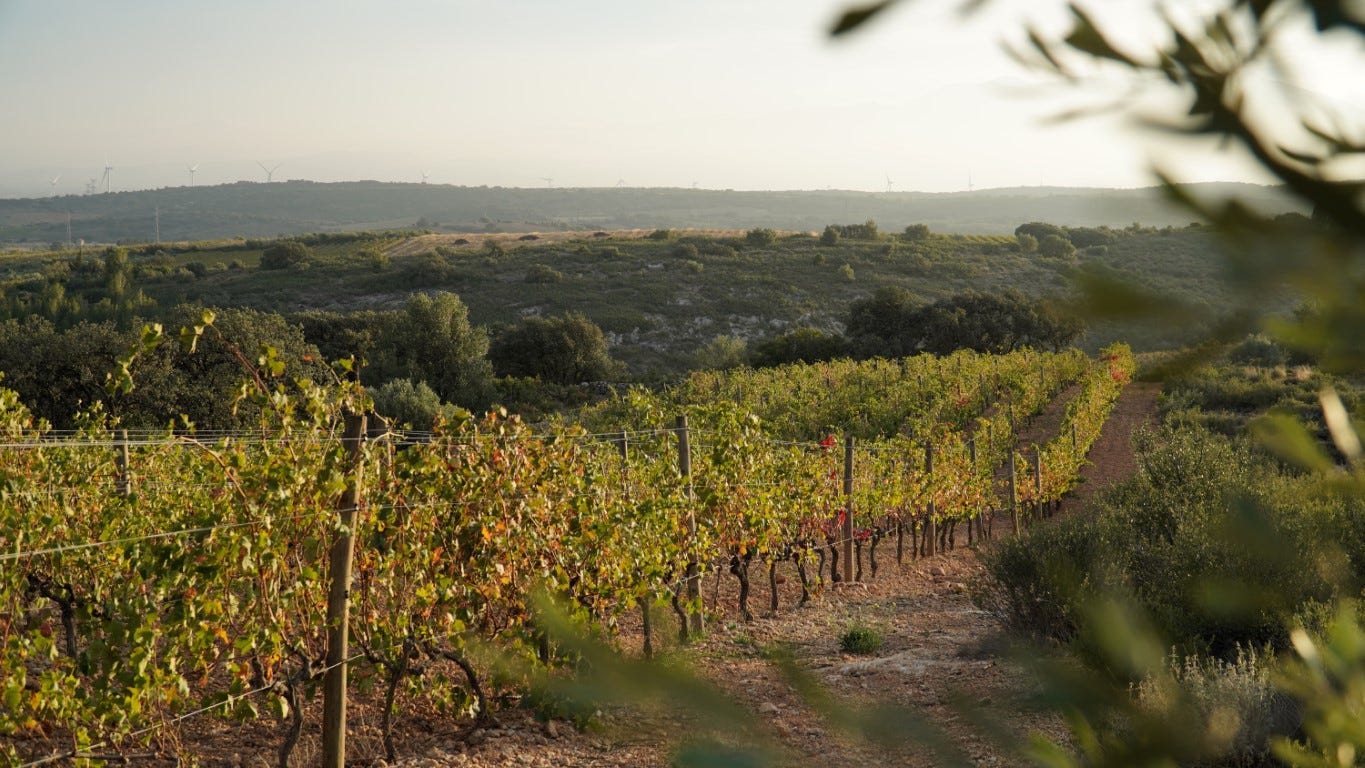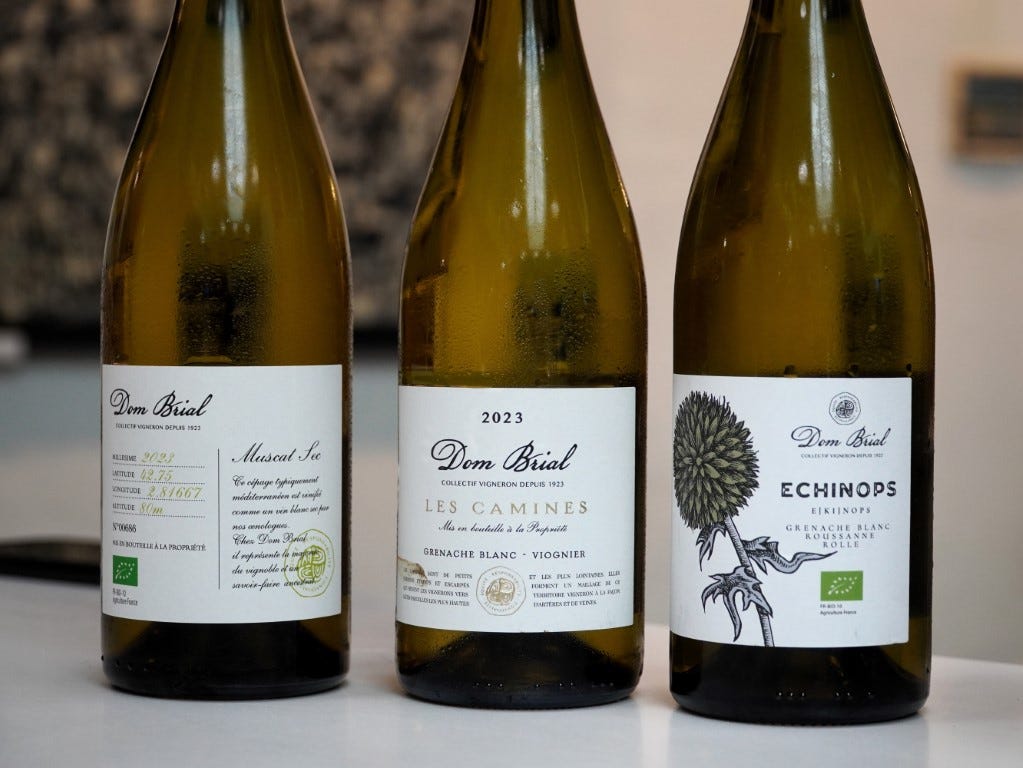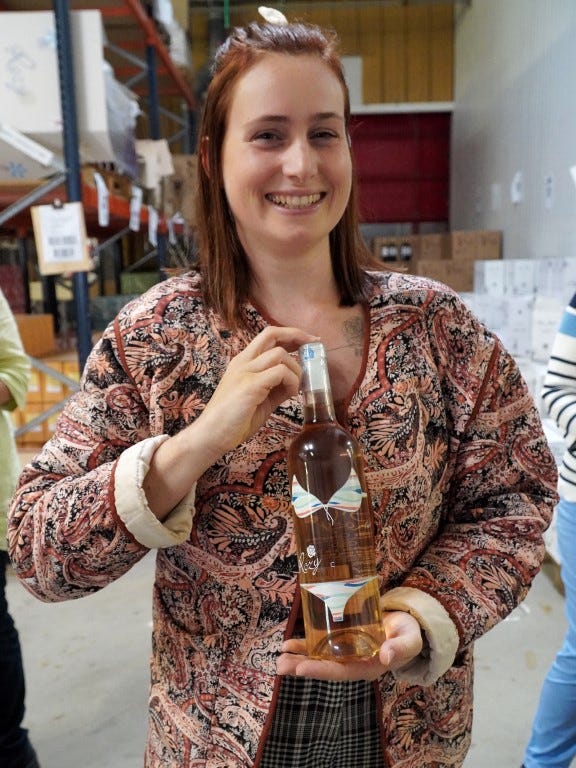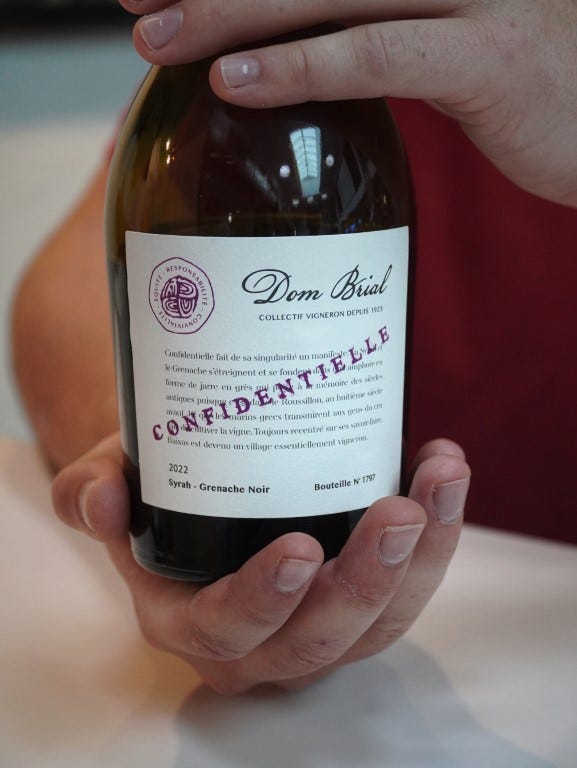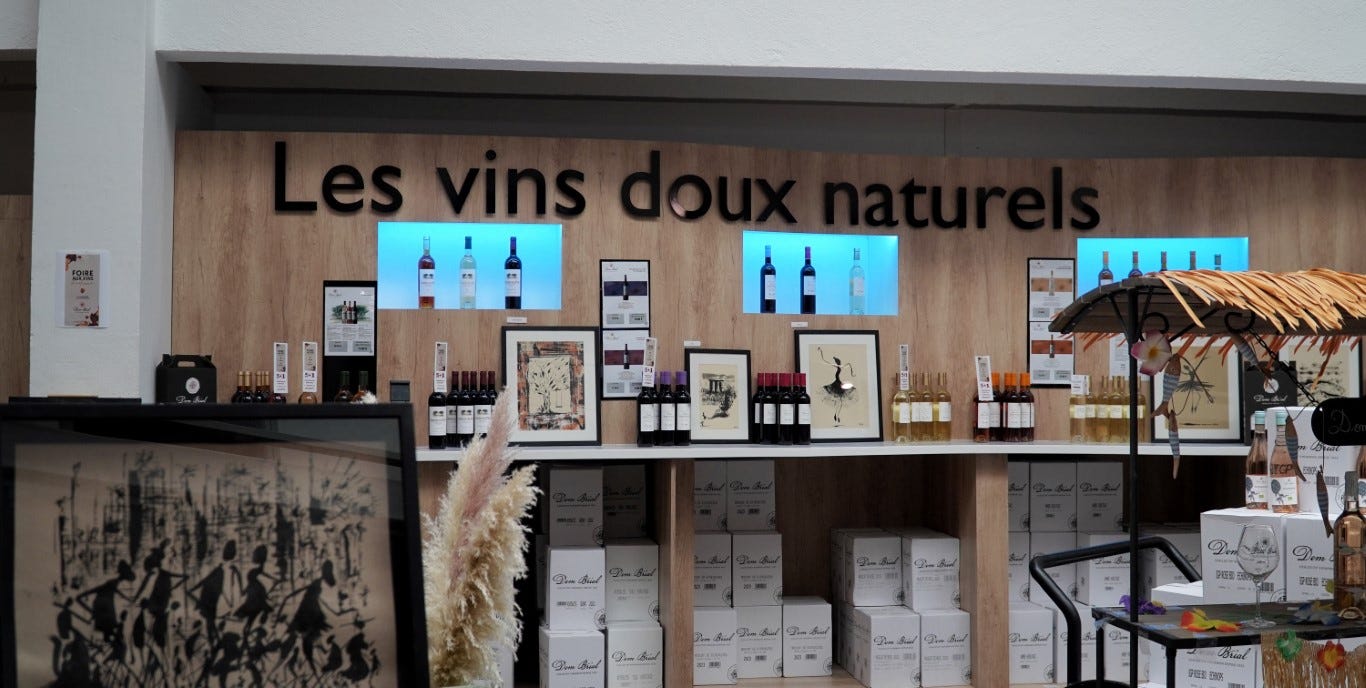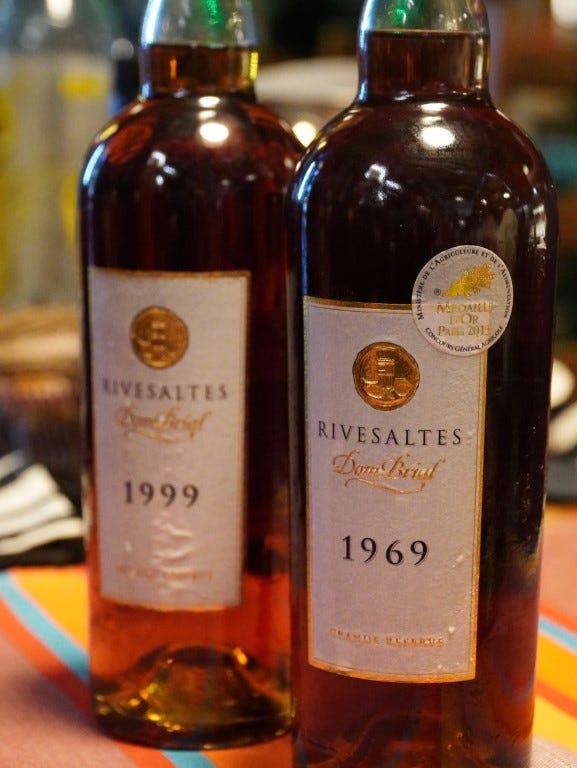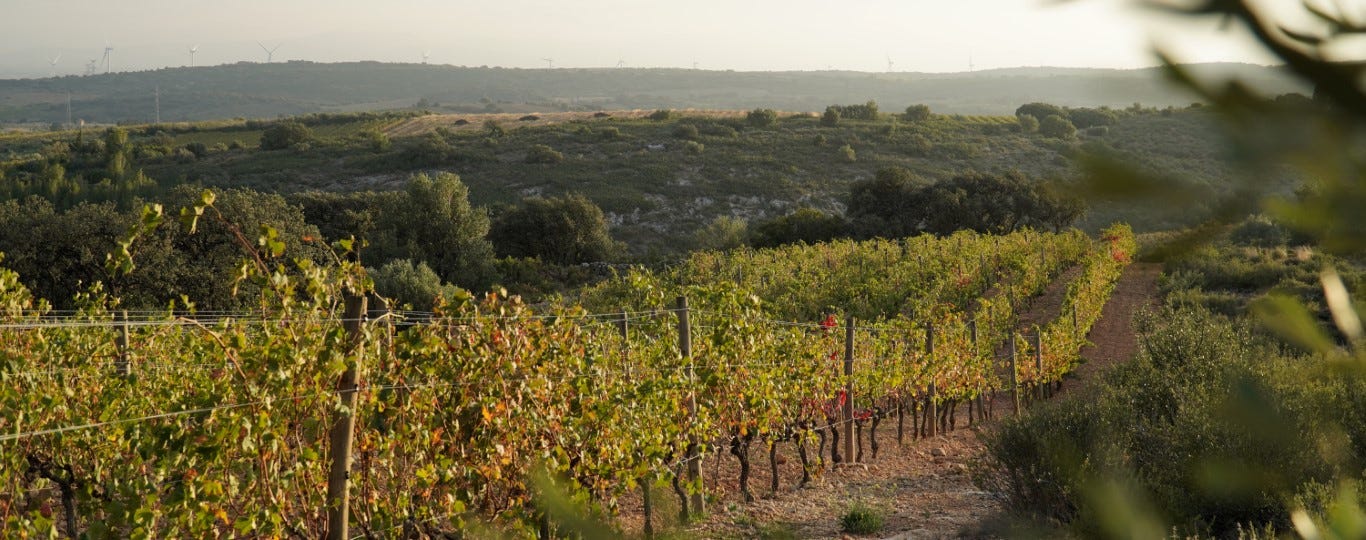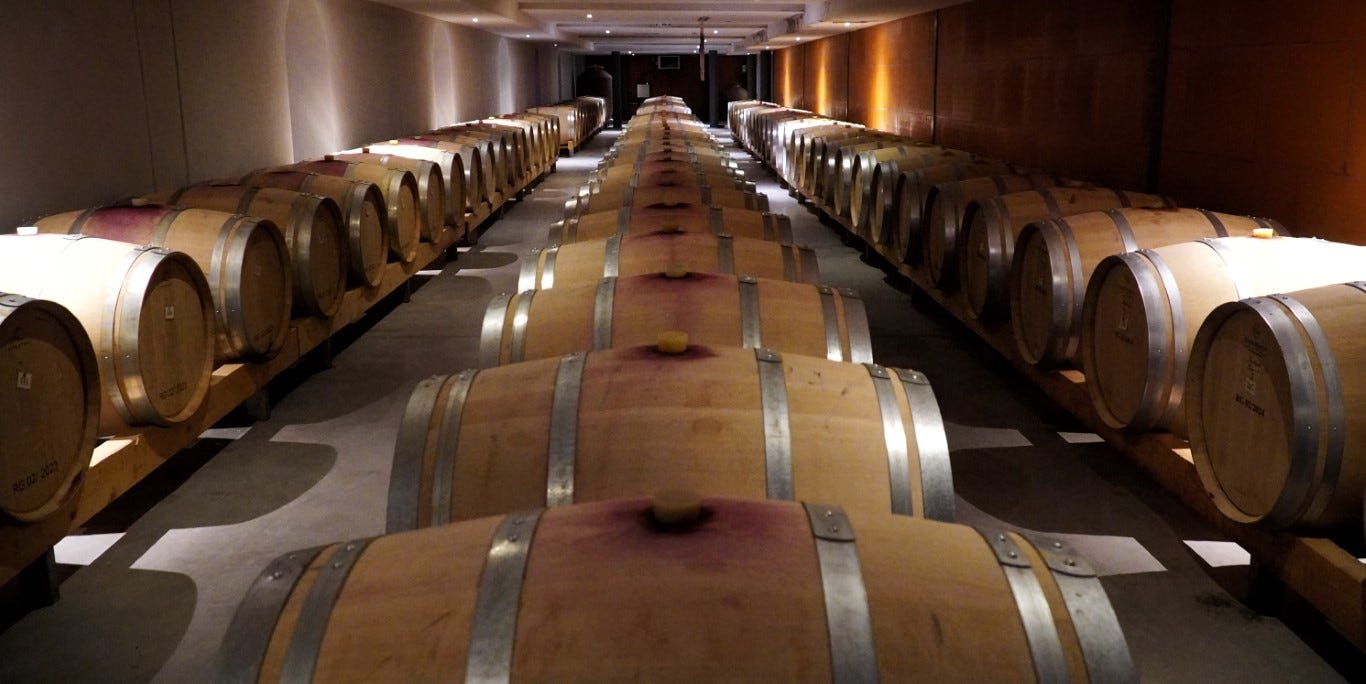
The Languedoc-Roussillon has been France's wine workhorse since the late 19th century. Did you know that with nearly 400,000 hectares of vineyards, the Languedoc-Roussillon is the largest winegrowing region in the world? For a long time, this wine region was known as being 'only suitable for bulk wines', but that has certainly changed in recent years. I visited the Dom Brial wine cooperative to see the winery for myself and to taste everything from playful bikini rosé to serious Rivesaltes.
» Read the original Dutch article here
The Dom Brial Wine Cooperative
In the small village of Baixas, near Perpignan, a unique collaboration emerged in 1923. One hundred winemakers, marked by the devastating phylloxera crisis that hit French vineyards, decided to join forces and founded 'La Cave Viticole de Baixas'. With the motto 'Together we are strong', they laid the foundation for a thriving cooperative. Soon their network expanded and the name of the winery became known far beyond Roussillon. In honor of Michel Jean Joseph Brial, a Benedictine monk who meant a lot to the region, the cooperative was renamed 'Dom Brial' in 1985. Brial, born in Perpignan, was a great historian and founder of two schools for underprivileged children in Baixas and Pia.
Today, Dom Brial comprises about 200 winegrowers and has obtained various certifications for quality and sustainability. The cooperative also has a strong social responsibility by guaranteeing fair prices for both producers and consumers. Dom Brial has been awarded several times as the best wine cooperative in France, notably by the Berliner Wein Trophy, confirming its position in the wine world. The winemaker and production director is Agnès Arquier and she has been in charge since 2004. She likes to experiment, which we can see in the various barrels in the cellar. From traditional barriques to wooden 'pearls' and concrete 'eggs'.




The Wines
The wines of Dom Brial fall under the AOPs Côtes du Roussillon, Côtes du Roussillon Villages, Muscat de Rivesaltes, Rivesaltes and IGP Côtes Catalanes. And you might think Catalonia is in Spain? That's right, but the IGP Côtes Catalanes is a wine region in the Languedoc-Roussillon. Dom Brial's arsenal is enormous; around 45 different wines. They have white, rosé, red and the sweet Vin Doux Naturel wines (but more on that later).
A wine that has been in the Dom Brial range for 20 years is the Rozy rosé. Now, a rosé wine might not be that recognizable, but this one certainly is. Rozy gets a new bikini every year! For edition 20, Rozy has lost her characteristic décolleté. Dom Brial is also increasingly committed to sustainable viticulture and has introduced a range of organic wines in recent years. These wines are the result of a long-term transition to organic farming, with several fully organic plots under management for a number of years.
My favorite wine from the line-up in the tasting room was the Dom Brial Confidentielle AOP Côtesdu Roussillon Villages 2022; a blend of 80% Syrah and 20% Grenache noir, stainless steel maceration for 3 weeks and then aged in sandstone amphora for 6 to 8 months. Normally I'm not really into amphoras, but with this wine it works fantastically. Ruby red in color, blackcurrant, blackberry, spices on the nose and a full and round mouthfeel. Fine notes of cherries, violets and licorice, and velvety tannins in the finish.
Rivesaltes
When we talk about Rivesaltes, there are actually a few different things that have the same name. There is the village of Rivesaltes, the wine region AOP Rivesaltes, the grape variety Muscat de Rivesaltes and then also the sweet wine Rivesaltes, a Vin Doux Naturel (VDN). Unlike sweet wines such as Sauternes, the sugar in these wines is not fully converted into alcohol. This is due to the addition of alcohol during the fermentation process, which stops the yeasts. This technique, called 'mutage', was discovered as early as the 13th century.
Roussillon is the largest production area for Vin Doux Naturel, with appellations such as Banyuls, Maury Doux and Rivesaltes. This wine is also made in Languedoc, the southern Rhône and Corsica. The grapes used for Vin Doux Naturel vary, but Muscat à petit grains blancs and Grenache are the most well-known. The taste can be fresh or complex, with hints of citrus, fruit, nuts, coffee and even tobacco. Vin Doux Naturel is perfect as an aperitif or digestif. You can also enjoy it with foie gras, sweet and sour dishes, blue cheese and especially chocolate desserts.
To give you an idea of the variety of VDNs: Rivesaltes comes in not just simple white and red, but in blanc, ambré, rosé, tuilé, rubis and rancio, the last of which has aged for a very long time and is highly oxidized. During dinner at Le Garde Manger we had a Dom Brial Rivesaltes from 1999 and 1969 with our chocolate dessert. It is very special that these sweet wines are still complex, with a combination of dried fruit, figs and apricots, but still have enough acidity for balance.
A Visit to the Crest Petit Vineyard
At the end of the afternoon, we also paid a brief visit to the vineyard that supplies the grapes for Dom Brial's top wine: the Crest Petit. The owner of the Syrah vines is Pierre Fons, who enthusiastically tells us about the surroundings, the terroir (clay-limestone and slopes of slate) and the 2024 harvest. In the surrounding vineyards there are even walking paths and information boards between the vines. And with a beautiful view of the vineyards in the setting sun and in the distance appear the high peaks of the Massif du Canigou.
Wine Tourism
The term 'Oenotourisme' is the French word for fun things to do in and around the vineyards. Dom Brial offers a wide range of activities for wine lovers who want to discover the Roussillon region. From exciting quad and electric scooter tours through the vineyards to leisurely walks and extensive tours through the wine cellars. Visitors can explore the beautiful landscapes, discover the history of the cooperative and of course enjoy the delicious wines of Dom Brial.
In addition to the more active activities, Dom Brial also offers numerous opportunities to get to know the wines. Tastings are regularly organized, both for individual visitors and for groups. During these tastings, participants can learn more about the different grape varieties, the vinification processes and the characteristics of the wines. For groups, there are also special workshops available.
Restaurant Tip Nearby
After the visit to the vineyard, we drove on to Le Garde Manger, a kind of hybrid delicatessen store/butcher/restaurant. As a vegetarian or vegan, you have little to look for here, because at the back of the shop there is a huge dry-aged ripening cabinet filled with colossal pieces of beef and other animals. We start with the aperitif trend in the Roussillon now: a Riv'tonic; made from equal parts Rivesaltes Ambré and tonic. A delicious large platter with local delicacies such as snails in garlic butter, coarse salami, cheeses and blood sausage comes to the table. Then we dive into a veal brochette with El Cami Rouge IGP Côtes Catalanes. An organic wine where the stripes on the label stand for the snail's trail; just as slow as the bureaucratic process was to officially make this wine.


Traveling to the Languedoc-Roussillon
The Languedoc-Roussillon is a long drive from the Netherlands. From Utrecht, it takes about 12-14 hours by car to reach the heart of the wine region. No desire to fly? You can also take the train; take a Eurostar to Paris Nord, metro to Gare de Lyon and from there there is a direct TGV to Montpellier. In total, the journey takes between 8 and 10 hours. Still prefer to be at your destination faster? Several airlines offer direct flights to Montpellier or Perpignan, with a flight time of approximately 2 hours. Airlines such as Transavia, KLM and easyJet offer several flights per day. Use a comparison site to find the best flights. It is handy to arrange a rental car on site; many of the wineries are very remote without a train station or bus stop nearby. A car is a must in the Languedoc-Roussillon.



































